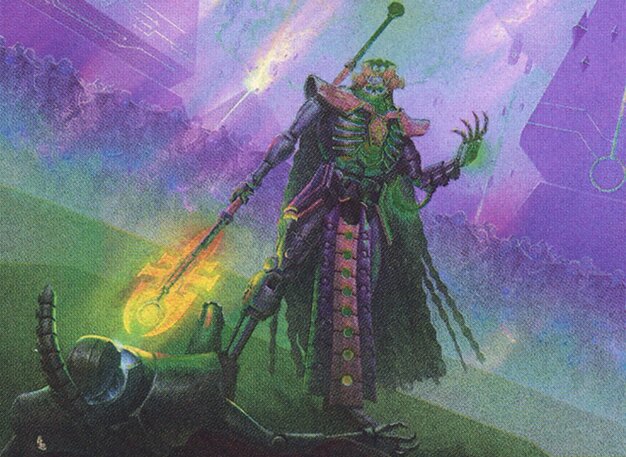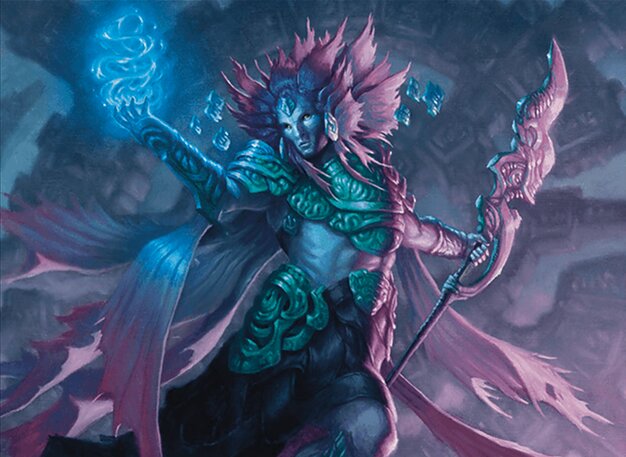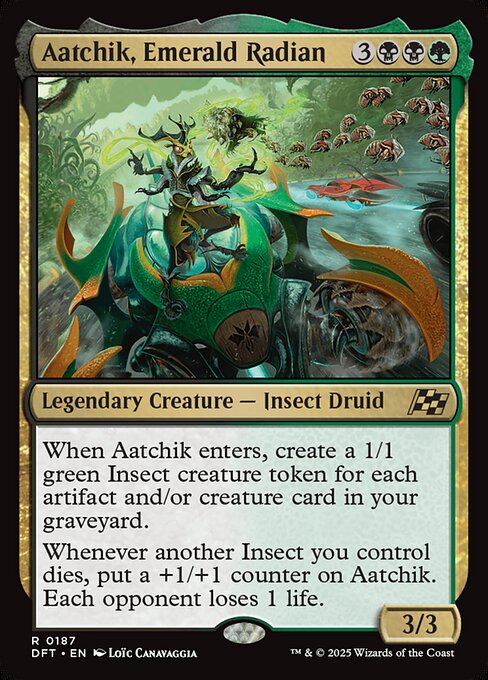Deck & Commander Strategies

Imotekh the Stormlord
Mono-black artifact and warrior tribal deck focused on generating artifact creature tokens and enhancing them with equipment to create a threatening board presence with menace.

Aatchik, Emerald Radian
Insect tribal deck that creates insect tokens based on cards in the graveyard and grows them through insect deaths, draining opponents' life and escalating board presence.

Hakbal of the Surging Soul
Muro tribal deck leveraging explore mechanics to ramp and draw cards, with additional land drops on attacks to maintain card advantage and board development.

Temmet, Naktamun's Will
Esper zombie tribal deck combining control elements and zombie synergies to dominate the board and outvalue opponents through resilient creatures and spells.
Gameplay Insights
- 1
Imotekh's creation of artifact creature tokens combined with equipment buffs created a menacing board state that pressured opponents heavily through menace.
- 2
Aatchik's ability to grow insects from deaths and graveyard interactions steadily increased threat level while draining opponents' life totals.
- 3
Hakbal's mechanic of playing lands from hand during attacks allowed for accelerated ramp and card draw, keeping the deck well-resourced throughout the game.
- 4
Early ramp and creature deployment were essential for all players to establish tempo and prepare for mid-game combat interactions.
- 5
The interaction between token generation, tribal synergies, and combat damage was pivotal in determining board control and momentum shifts.
Notable Cards
-

Imotekh the Stormlord
-

Aatchik, Emerald Radian
-

Hakbal of the Surging Soul
-

Temmet, Naktamun's Will
Gameplay Summary
The game started with each player randomly selecting one of four diverse commanders: Imotekh the Stormlord, Aatchik, Emerald Radian, Hakbal of the Surging Soul, and Temmet, Naktamun's Will.
Imotekh led a mono-black artifact-warrior deck focused on creating artifact creature tokens and buffing them with menace.
Aatchik piloted an insect tribal deck that gains strength through insect deaths and graveyard recursion.
Hakbal's deck centered around Muro creatures with explore mechanics, generating card advantage or ramp by playing lands during attacks.
Temmet led a zombie esper deck with a controlling and synergistic theme.
The early turns involved setting up board presence with ramp and minor creatures, as well as searching for lands to accelerate development. Mid-game saw Imotekh's token generation and equipment synergies start to pressure opponents, while Aatchik grew steadily with +1/+1 counters from insect deaths, draining life from opponents.
Hakbal leveraged land drops on attacks to ramp quickly and draw cards, maintaining card flow.
Temmet's deck aimed to establish board control with zombies and powerful spells.
Key turning points included Imotekh's artifact creatures gaining menace and becoming difficult to block, and Aatchik's increasing insect army posing a growing threat.
The game likely revolved around combat damage and attrition, with each deck trying to leverage its tribal or artifact synergies to outpace opponents and secure victory.





























![Warhammer 40,000 Upgraded [Commander VS 313] | Magic: the Gathering Commander Gameplay thumbnail](https://i.ytimg.com/vi/C5lxkOuAUw0/sddefault.jpg)















